- Home
- Ursula K. Le Guin
The Books of Earthsea: The Complete Illustrated Edition
The Books of Earthsea: The Complete Illustrated Edition Read online
CONTENTS
TITLE PAGE
MAP
INTRODUCTION
A WIZARD OF EARTHSEA
THE TOMBS OF ATUAN
THE FARTHEST SHORE
TEHANU
TALES FROM EARTHSEA
THE OTHER WIND
A DESCRIPTION OF EARTHSEA
“THE WORD OF UNBINDING”
“THE RULE OF NAMES”
“THE DAUGHTER OF ODREN”
“FIRELIGHT”
EARTHSEA REVISIONED
ARTIST’S NOTE
ALSO BY URSULA K. LE GUIN
COPYRIGHT
Map
INTRODUCTION
Earthsea had its beginning in 1964 in two stories that I wrote and published. They are slight; more like a sailor’s chance sighting of a couple of islands than the discovery of a new world. Earthsea exists in them, though, as the Americas existed in 1492 in Watlings Island, now known as San Salvador Island.
These stories speak of the Islands, of the Outer Reach, of the great rich islands of the Archipelago, the Inner Lanes, the roadsteads white with ships, and the golden roofs of Havnor. Earthsea is there, though unexplored. Some things mentioned—trolls, black magic—will never appear again. But one element in each story will turn out to be part of the deep fabric of Earthsea. “The Rule of Names” shows a magic that works through name and knowledge, and “The Word of Unbinding” gives a first glimpse of the shadow world of the dead.
The rest of Earthsea waited, then, till 1968, when the editor of Parnassus Press in Berkeley asked me if I’d write a fantasy novel for younger readers. After I’d gotten over the panic, and a big story about a young wizard began to sketch itself in my head, the first thing I did was sit down and draw a map. I saw and named Earthsea and all its islands. I knew almost nothing about them, but I knew their names. In the name is the magic.
The original map was on a very large sheet—probably butcher paper, which I had rolls of for my kids to draw on. That big map vanished years ago, but I’d made a careful copy on a smaller, handier scale, the original of the map in this book. And that provided the model for the many professional illustrators of various editions of the books in many countries to draw as carefully and more skillfully than I.
Its use to me was practical. A navigator needs a chart. As my characters sailed about, I needed to know how far apart the islands lay and in which direction one from another. The first book followed a kind of spiral from Gont to Roke and on round again to Astowell, all within the Archipelago. For the second book, the map gave me the Kargish land of Atuan. And after that, there was always an island or place I hadn’t visited yet, and a story in it. What island lay farthest to the west? Selidor . . . Look at Havnor: big enough that there might be people living inland who’d never seen the sea. What sort of magic did they really do on Paln? What about the big Kargish land of Hur-at-Hur, way out there as far east as Astowell and quite unknown to the Archipelagans—were there ever dragons there?
The last story of Earthsea I wrote, “The Daughter of Odren,” came from idly looking at the map and wondering what life was like on O back in the old days. It turned out to have some curious resemblances to life on Mycenae.
Beyond the elegant chapter headings by Ruth Robbins for the Parnassus’s edition of A Wizard of Earthsea, and Gail Garraty’s fine woodcut-like art in the same style for the early Atheneum editions, until very recently, the books of Earthsea had no illustrations. This was partly by my own decision. After Ruth’s unique wraparound jacket for the first edition of A Wizard of Earthsea—with its splendidly stylized, copper-brown portrait face—cover art for the books mostly went out of my control. The results could be ghastly—the droopy, lily-white wizard of the first Puffin UK paperback; the silly man with sparks shooting out of his fingers that replaced him. Some covers were quite pretty in themselves, but delicate medieval persons on twee islands with castles with pointy towers had nothing to do with my earthy, salty Earthsea. And as for copper or brown or black skin, forget it! Earthsea was bathed in bleach.
I was ashamed of the covers that gave the reader every wrong idea about the people and the place. I resented publishers’ art departments that met any suggestion that the cover might resemble something or someone in the book by rejecting it, informing me loftily that they Knew what would Sell (a mystery no honest cover designer would ever claim to know). Paperback houses wanted commercial, all-purpose fantasy covers; YA departments wanted no suggestion of adult concerns. So I discouraged all suggestions of illustration.
As the reputation of the books grew, I began to be granted, however grudgingly, more input on the cover art. From that period, 1991, Margaret Chodos-Irvine’s four beautiful jacket paintings for the first four books (Atheneum), and the gorgeous metallic covers of the last two (Harcourt). These last were thanks to my editor Michael Kandel, who fought long and fiercely for me. Years later, Michael let me see the first draft the cover department sent him: a fat green dragon, clearly modelled from one of those cute wind-up dinosaurs that spit sparks, sitting up like a dog begging, in a cloud of pink steam. St. Michael fought that dragon and defeated it, but it took him months.
Some real artists have painted covers for foreign editions of the books. My favorite of them all is Inger Edelfeldt’s grave, subtle portrait of Tenar and Therru on the Swedish Tehanu.
The first fully illustrated A Wizard of Earthsea is the Folio Society edition of 2015, with paintings by David Lupton. I was given free voice in choosing the artist, and David most generously sent me his sketches, let me respond and advise, and heeded what he could use of what I said. The combination of our temperaments produced a very grim Earthsea. I like its dark and troubled young protagonist, and in some of its paintings, I feel a great strangeness, as of magic actually happening.
And now, with this first fully illustrated, complete Earthsea, I can let Charles Vess’s art speak for itself.
I have written so often of how and why it took me so long to write the six books of Earthsea that the story has become like the book you have to read to your four-year-old every night for weeks—You really want to hear it again? Oh well, okay, here goes!
I wrote the first three books in five years: ’68, ’70, ’72. I was on a roll. None of them was closely plotted or planned before writing; in each of them much of the story came to me as I followed what I wrote where it inevitably led. I started confidently on the fourth book. The central character was Tenar again, of course, to balance it out. I knew she hadn’t stayed and studied wizardry with Ogion, but had married a farmer and had children, and that the story was going to bring her and Ged back together. But by the middle of the first chapter, I realized that I didn’t know who she was—now. I didn’t know why she’d done what she’d done or what she had to do. I didn’t know her story, or Ged’s. I couldn’t plot or plan it. I couldn’t write it. It took me eighteen years to learn how.
I was forty-two in 1972; in 1990, I was sixty. During those years, the way of understanding society that we’re obliged to call feminism (despite the glaring absence of its opposite term masculism) had grown and flourished. At the same time an increasing sense of something missing in my own writing, which I could not identify, had begun to paralyze my storytelling ability. Without the feminist writers and thinkers of the 1970s and ’80s, I don’t know if I ever could have identified this absence as the absence of women at the center.
Why was I, a woman, writing almost entirely about what men did?
Why because I was a reader who read, loved, and learned from the books my culture provided me; and they were almost entirely about what men did. The wome
n in them were seen in relation to men, essentially having no existence unrelated to male existence. I knew what men did, in books, and how one wrote about them. But when it came to what women did, or how to write about it, all I had to call on was my own experiences—uncertified, unapproved by the great Consensus of Criticism, lacking the imprimatur of the Canon of Literature, piping up solo against the universally dominant and almost unison chorus of the voices of men talking about men.
Oh, well, now, was that true? Hadn’t I read Jane Austen? Emily Brontë? Charlotte Brontë? Elizabeth Gaskell? George Eliott? Virginia Woolf? Other, long-silenced voices of women writing about both women and men were being brought back into print, into life. And my contemporary women writers were showing me the way. It was high time I learned to write of and from my own body, my own gender, in my own voice.
The central character of The Tombs of Atuan is female, the point of view is hers. But Tenar is just coming out of adolescence, not yet fully a woman. I had had no problem in 1970 writing out of my own experience of what it is to be a girl-child, an adolescent girl. What I couldn’t do then, and hadn’t yet done in 1990, was write a fully mature woman at the center of a novel.
Strangely enough, it took a child to show me the way into the fourth book of Earthsea. A girl-child, born in poverty, abused, maimed, abandoned, Therru led me back to Tenar, so that I could see the woman she had become. And through Tenar I could see Earthsea, unchanged, the same Earthsea as eighteen years earlier—but seeming almost a different world, for the viewpoint was no longer from a position of power or among men of power. Tenar was seeing it all from below, through the eyes of the marginal, the voiceless, the powerless.
The essay “Earthsea Revisioned,” reprinted in this edition, discusses that change in viewpoint. When Tehanu came out, a good many critics and readers saw it as mere gender politics and resented it as a betrayal of the romantic tradition of heroism. As I tried to say in the essay, not to change viewpoint would, for me, have been the betrayal. By including women fully in my story, I gained a larger understanding of what heroism is and found a true and longed-for way back into my Earthsea—now a very much greater, stranger, more mysterious place than it had ever appeared before.
Though Tehanu is named for the child character, neither it nor the two books after it are books “for children” or definable as “young adult.” I had abandoned any attempt to suit my vision of Earthsea to a publisher’s category or a critic’s prejudice. The notion that fantasy is only for the immature rises from an obstinate misunderstanding of both maturity and the imagination. So, as my protagonists grew older, I trusted my younger readers to follow them or not, as and when they chose. In the PR-driven world of publishing, that constituted a real risk, and I am very grateful to the editors who took that risk with me.
But there was one thing about Tehanu that I myself completely misunderstood when I wrote and published it. I thought my long-sought fourth volume (my private title for it was Better Late than Never) was the end of Ged and Tenar’s story. And I said so right on the title page: The Last Book of Earthsea.
Never say never; never say last!
For nearly ten years I believed I could leave the two of them there in peace and contentment in Ogion’s house on Gont. But then I was asked to write a short story set in Earthsea. I wondered if I could, and took a look at Earhsea. As soon as I did, I realized I had to go back.
Between the third and fourth books there’s no time jump at all; after Tehanu catches us up on the years of Tenar’s life on Gont, the dragon carries Ged straight into the book from the end of The Farthest Shore. But now, time had passed there as well as here. Things had changed. I had to go find out what had happened since Lebannen was crowned. Who had been named Archmage? What had become of the child Tehanu? These questions opened up larger ones—about who could and couldn’t work magic, about the afterlife, about the dragons—things the four books didn’t explain, things I wanted to know, unfinished business.
As I wrote in the introduction to Tales from Earthsea, “The way one does research into nonexistent history is to tell the story and find out what happened.” I did that in five stories, the most historical of which is “The Finder,” plus a description of Earthsea, a brief geography, history, and descriptive anthro-draconology. This fifth book has been treated as marginal, but it’s integral. The long last story, “Dragonfly,” is a key part of the whole story of Ged and Tenar. It is the link between Tehanu and The Other Wind. It foreshadows the material of that book—what has gone wrong on Roke Island, at the very heart of wizardry and wisdom; why the afterlife bargained for by wizardry is meaningless; who and what the dragons are.
Soon after I wrote that story, I began to write the sixth novel. The Other Wind presented itself to me without explaining itself, urgent, imperative, final. If a dragon comes to you and says, “Arw sobriost!” you don’t ask questions. You do what it says. There is a great taloned foot, set like a step in front of you; and above it, the crook of the elbow joint; and above that, the jutting shoulder blade: a stairway. You clamber up that stairway, feeling the fiery inner heat of the dragon’s body. You settle yourself between the vast wings, take hold of the big spine-thorn before you. And the dragon lifts, takes off, takes you where you and it must go, flying on the other wind, flying free.
—Ursula K. Le Guin, February 2016
To my brothers
Clifton, Ted, Karl
1. WARRIORS IN THE MIST
2. THE SHADOW
3. THE SCHOOL FOR WIZARDS
4. THE LOOSING OF THE SHADOW
5. THE DRAGON OF PENDOR
6. HUNTED
7. THE HAWK’S FLIGHT
8. HUNTING
9. IFFISH
10. THE OPEN SEA
AFTERWORD
Only in silence the word,
only in dark the light,
only in dying life:
bright the hawk’s flight
on the empty sky.
—The Creation of Éa
CHAPTER 1
WARRIORS IN THE MIST
The island of Gont, a single mountain that lifts its peak a mile above the storm-racked Northeast Sea, is a land famous for wizards. From the towns in its high valleys and the ports on its dark narrow bays many a Gontishman has gone forth to serve the Lords of the Archipelago in their cities as wizard or mage, or, looking for adventure, to wander working magic from isle to isle of all Earthsea. Of these some say the greatest, and surely the greatest voyager, was the man called Sparrowhawk, who in his day became both dragonlord and Archmage. His life is told of in the Deed of Ged and in many songs, but this is a tale of the time before his fame, before the songs were made.
He was born in a lonely village called Ten Alders, high on the mountain at the head of the Northward Vale. Below the village the pastures and plowlands of the Vale slope downward level below level towards the sea, and other towns lie on the bends of the River Ar; above the village only forest rises ridge behind ridge to the stone and snow of the heights.
The name he bore as a child, Duny, was given him by his mother, and that and his life were all she could give him, for she died before he was a year old. His father, the bronze-smith of the village, was a grim unspeaking man, and since Duny’s six brothers were older than he by many years and went one by one from home to farm the land or sail the sea or work as smith in other towns of the Northward Vale, there was no one to bring the child up in tenderness. He grew wild, a thriving weed, a tall, quick boy, loud and proud and full of temper. With the few other children of the village he herded goats on the steep meadows above the river-springs; and when he was strong enough to push and pull the long bellows-sleeves, his father made him work as smith’s boy, at a high cost in blows and whippings. There was not much work to be got out of Duny. He was always off and away; roaming deep in the forest, swimming in the pools of the River Ar that like all Gontish rivers runs very quick and cold, or climbing by cliff and scarp to the heights above the forest, from which he could see th
e sea, that broad northern ocean where, past Perregal, no islands are.
A sister of his dead mother lived in the village. She had done what was needful for him as a baby, but she had business of her own and once he could look after himself at all she paid no more heed to him. But one day when the boy was seven years old, untaught and knowing nothing of the arts and powers that are in the world, he heard his aunt crying out words to a goat which had jumped up onto the thatch of a hut and would not come down: but it came jumping when she cried a certain rhyme to it. Next day herding the longhaired goats on the meadows of High Fall, Duny shouted to them the words he had heard, not knowing their use or meaning or what kind of words they were:
Noth hierth malk man
hiolk han merth han!
He yelled the rhyme aloud, and the goats came to him. They came very quickly, all of them together, not making any sound. They looked at him out of the dark slot in their yellow eyes.
Duny laughed and shouted it out again, the rhyme that gave him power over the goats. They came closer, crowding and pushing round him. All at once he felt afraid of their thick, ridged horns and their strange eyes and their strange silence. He tried to get free of them and to run away. The goats ran with him keeping in a knot around him, and so they came charging down into the village at last, all the goats going huddled together as if a rope were pulled tight round them, and the boy in the midst of them weeping and bellowing. Villagers ran from their houses to swear at the goats and laugh at the boy. Among them came the boy’s aunt, who did not laugh. She said a word to the goats, and the beasts began to bleat and browse and wander, freed from the spell.
“Come with me,” she said to Duny.
She took him into her hut where she lived alone. She let no child enter there usually, and the children feared the place. It was low and dusky, windowless, fragrant with herbs that hung drying from the crosspole of the roof, mint and moly and thyme, yarrow and rushwash and paramal, kingsfoil, clovenfoot, tansy and bay. There his aunt sat cross-legged by the firepit, and looking sidelong at the boy through the tangles of her black hair she asked him what he had said to the goats, and if he knew what the rhyme was. When she found that he knew nothing, and yet had spell-bound the goats to come to him and follow him, then she saw that he must have in him the makings of power.

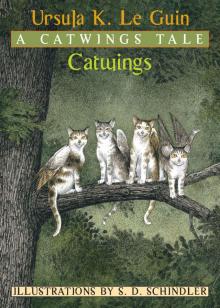 Catwings
Catwings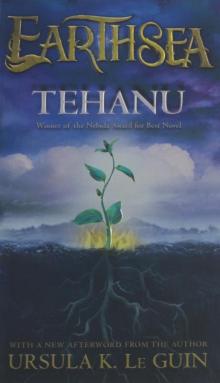 Tehanu
Tehanu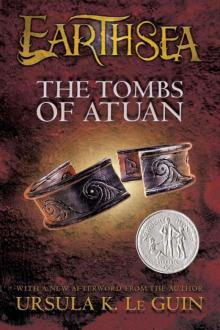 The Tombs of Atuan
The Tombs of Atuan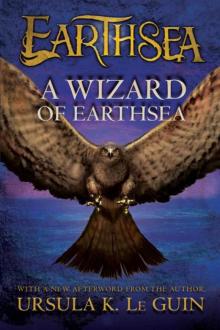 A Wizard of Earthsea
A Wizard of Earthsea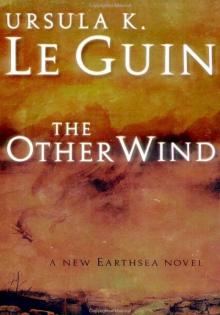 The Other Wind
The Other Wind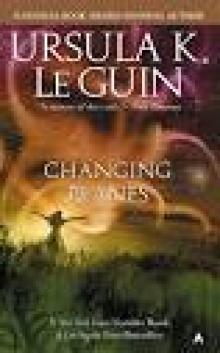 Ursula K. Le Guin
Ursula K. Le Guin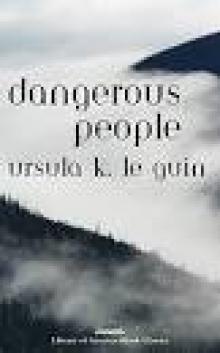 Dangerous People
Dangerous People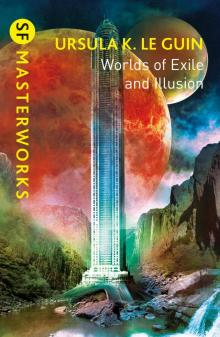 Worlds of Exile and Illusion: Rocannon's World, Planet of Exile, City of Illusions
Worlds of Exile and Illusion: Rocannon's World, Planet of Exile, City of Illusions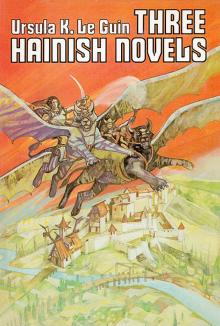 Three Hainish Novels
Three Hainish Novels The Left Hand Of Darkness (SF Masterworks)
The Left Hand Of Darkness (SF Masterworks)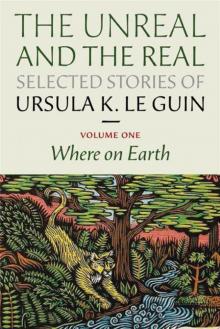 The Unreal and the Real - Vol 1 - Where On Earth
The Unreal and the Real - Vol 1 - Where On Earth The Visionary
The Visionary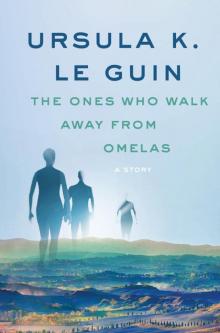 The Ones Who Walk Away from Omelas
The Ones Who Walk Away from Omelas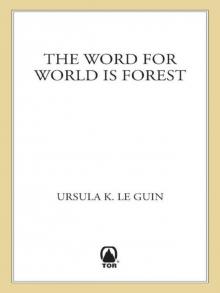 The Word for World is Forest
The Word for World is Forest Always Coming Home
Always Coming Home The Unreal and the Real - Vol 2 - Outer Space, Inner Lands
The Unreal and the Real - Vol 2 - Outer Space, Inner Lands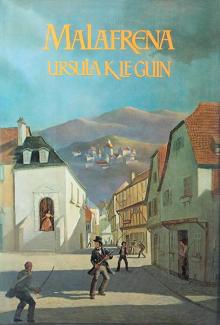 Malafrena
Malafrena The Lathe of Heaven
The Lathe of Heaven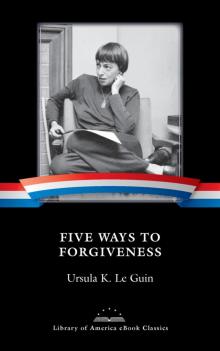 Five Ways to Forgiveness
Five Ways to Forgiveness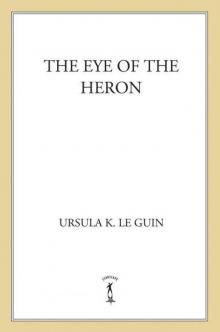 The Eye of the Heron
The Eye of the Heron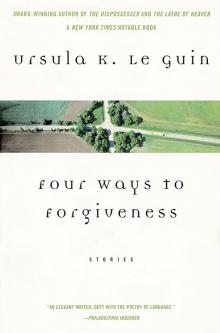 Four Ways to Forgiveness
Four Ways to Forgiveness Powers
Powers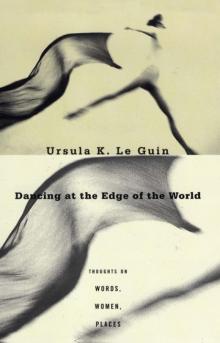 Dancing at the Edge of the World
Dancing at the Edge of the World Very Far Away from Anywhere Else
Very Far Away from Anywhere Else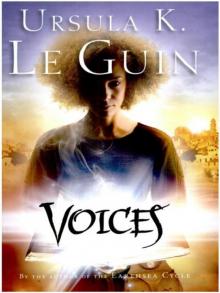 Voices aotws-2
Voices aotws-2 The New Atlantis
The New Atlantis The Unreal and the Real, Selected Stories of Ursula K. Le Guin Volume 1: Where on Earth
The Unreal and the Real, Selected Stories of Ursula K. Le Guin Volume 1: Where on Earth The Telling
The Telling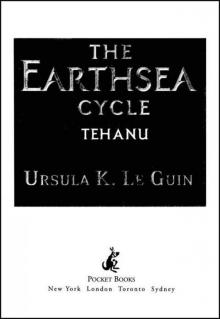 Tehanu (Earthsea Cycle)
Tehanu (Earthsea Cycle)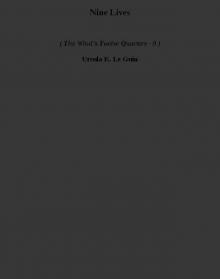 Nine Lives twtq-9
Nine Lives twtq-9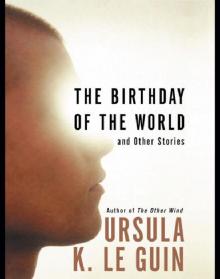 The Birthday of the World and Other Stories
The Birthday of the World and Other Stories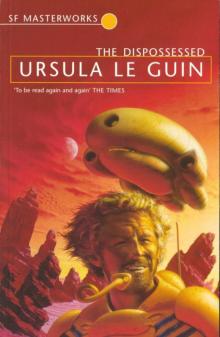 The Dispossessed
The Dispossessed Changing Planes
Changing Planes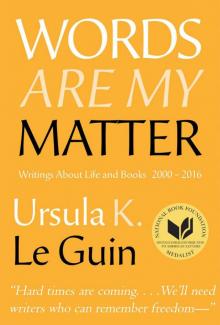 Words Are My Matter
Words Are My Matter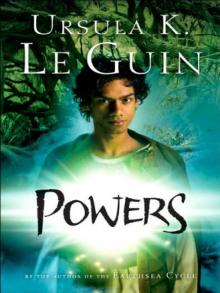 Powers aotws-3
Powers aotws-3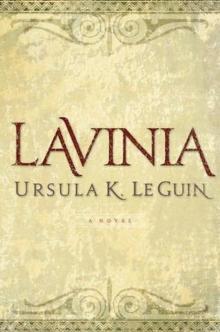 Lavinia
Lavinia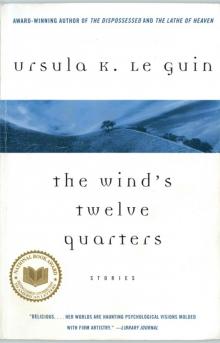 The Wind's Twelve Quarters
The Wind's Twelve Quarters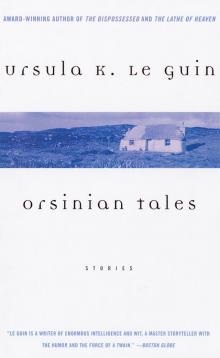 Orsinian Tales
Orsinian Tales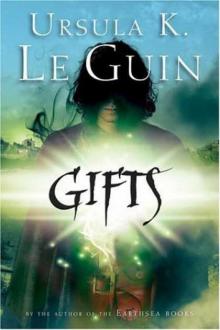 Gifts aotws-1
Gifts aotws-1 Coming of Age in Karhide
Coming of Age in Karhide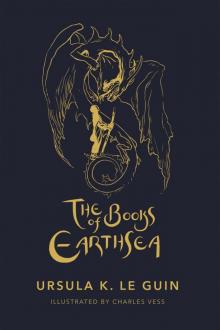 The Books of Earthsea: The Complete Illustrated Edition
The Books of Earthsea: The Complete Illustrated Edition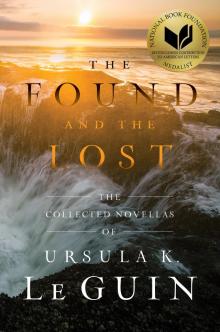 The Found and the Lost
The Found and the Lost No Time to Spare
No Time to Spare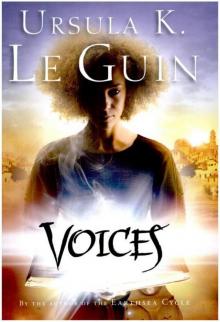 Voices
Voices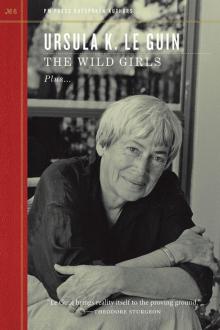 The Wild Girls
The Wild Girls Old Music and the Slave Women
Old Music and the Slave Women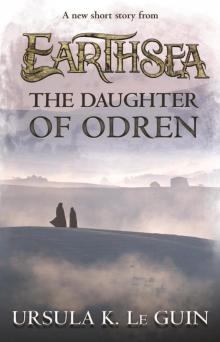 The Daughter of Odren
The Daughter of Odren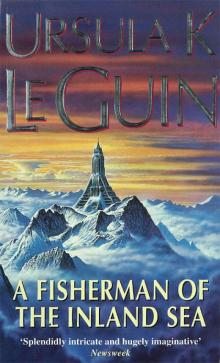 A Fisherman of the Inland Sea: Stories
A Fisherman of the Inland Sea: Stories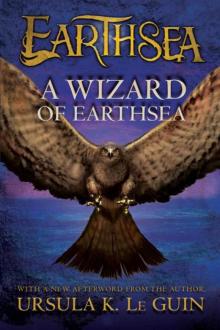 A Wizard of Earthsea (The Earthsea Cycle)
A Wizard of Earthsea (The Earthsea Cycle)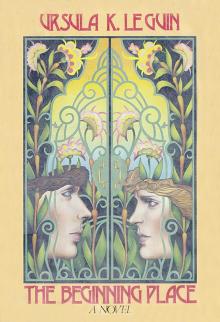 The Beginning Place
The Beginning Place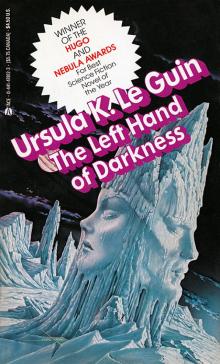 The Left Hand of Darkness
The Left Hand of Darkness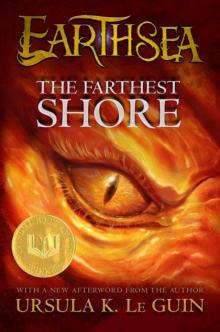 The Farthest Shore (Earthsea Cycle)
The Farthest Shore (Earthsea Cycle) The Matter of Seggri botw-2
The Matter of Seggri botw-2